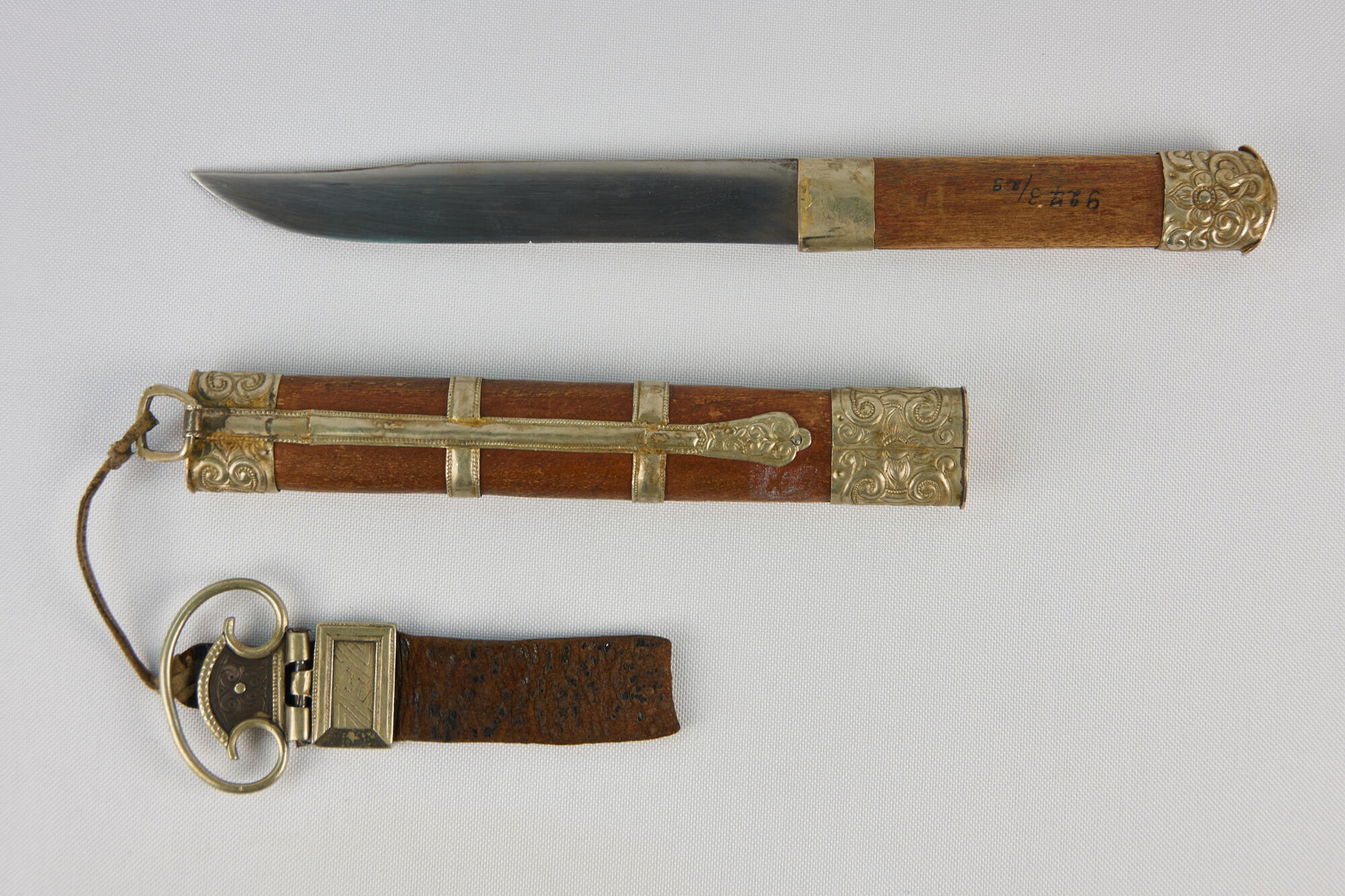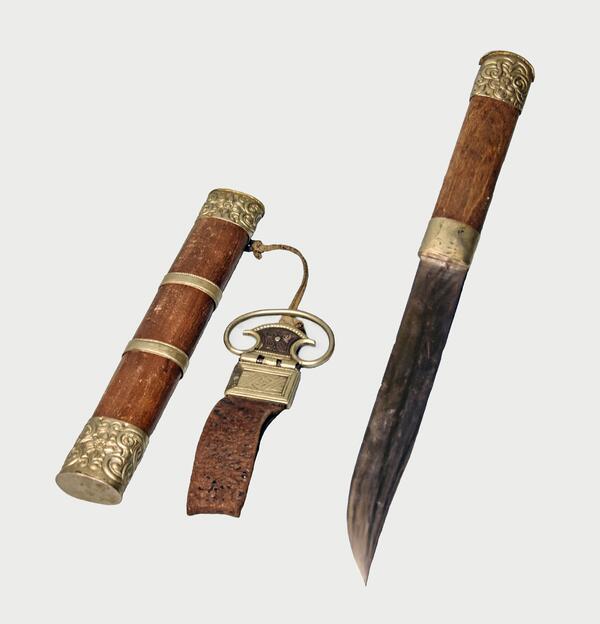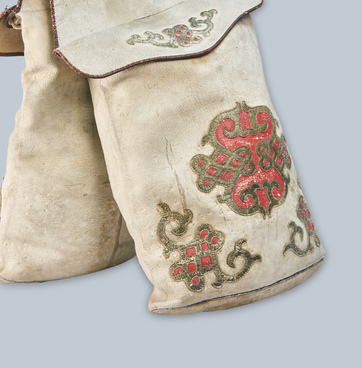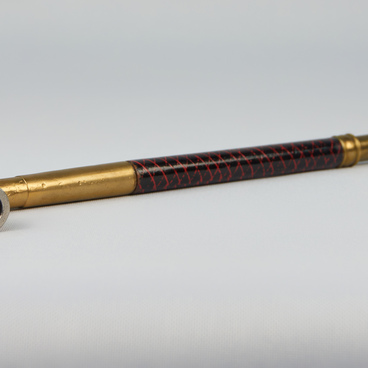The belt is a special detail of traditional Tuvan men’s costume. In the late 19th — early 20th centuries, Tuvans wore belts made of different materials depending on their wealth and social status: hair, wool, fabric and leather. Belts could be woven.
There was also a special way of wearing the belt. A man who achieved a certain level of success in creating a family, bringing up children, increasing the welfare of his family and community, tied a multi-layered belt below the waist line to emphasize his gravity and burdensomeness. A young man could not wear his belt that way and placed it modestly at waist level.
Tuvans also hung various accessories and pendants (dergi) on their belts. For example, women hung small knives for leather dressing, keys, needle cases on their belts, while men suspended a flintlock and a knife in a scabbard on theirs. According to tradition, pendants and objects were arranged in a certain order. On the left side of the belt there were pendants with a pouch of tobacco and a pipe, a flintlock with a metal cup for ashes, a sickle-shaped hook for pipe cleaning, and sometimes a shell as an amulet. The sheath with the knife was carried on a pendant buckle attached to the belt on the right side.
A knife (bijek) is a special item for a man. It is a symbol of pride and dignity of a Tuvan. The quality and appearance of the knife and sheath (hyn) showed the wealth and position of a man in society. This utensil was used in everyday life, in making household items, and for hunting. It was usually worn behind the back, and when entering the yurt, it was taken off the belt and kept in plain sight, it was not hidden behind the back.
The knife in a sheath with a buckle (dergilig khynnyg bijek) is made by the craftsman Donduk Doibukhaa in the traditional Tuvan technique. Donduk Doibukhaa is a folk stonecutter, People’s Artist of the Russian Federation. His father was one of the founders of the stonecutting art in Tuva.
The sheath and handle are made of warm-brown wood base and rectangular in shape. The lower and upper parts of the sheath are covered with metal plates, and there are two rings in the middle at a distance of four centimeters.





